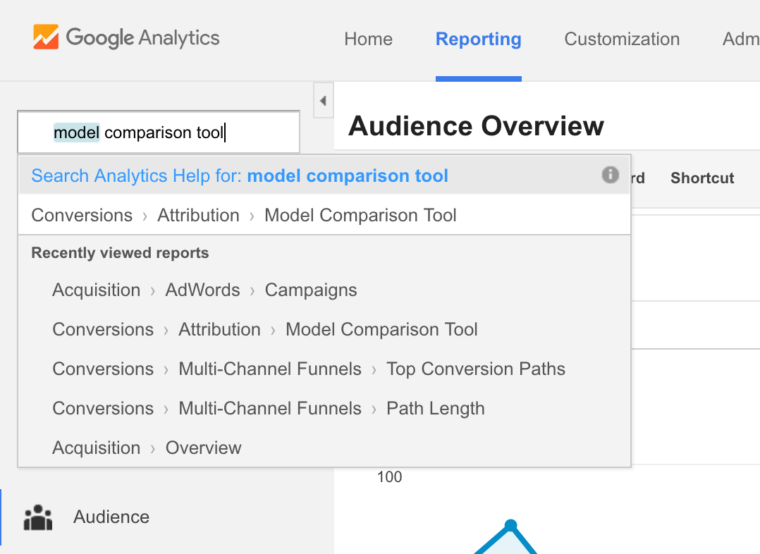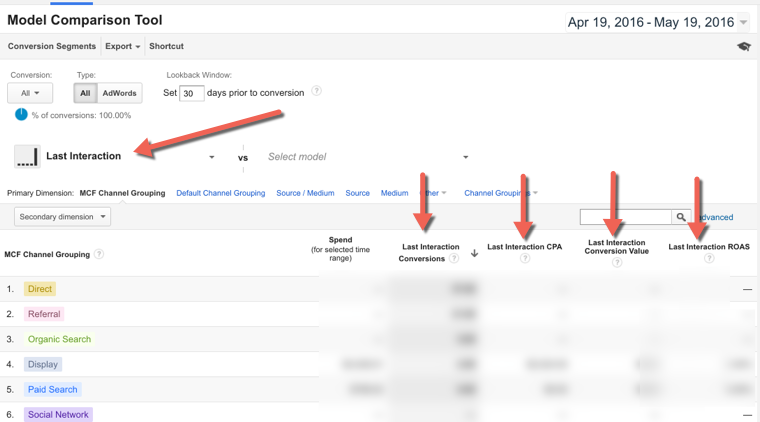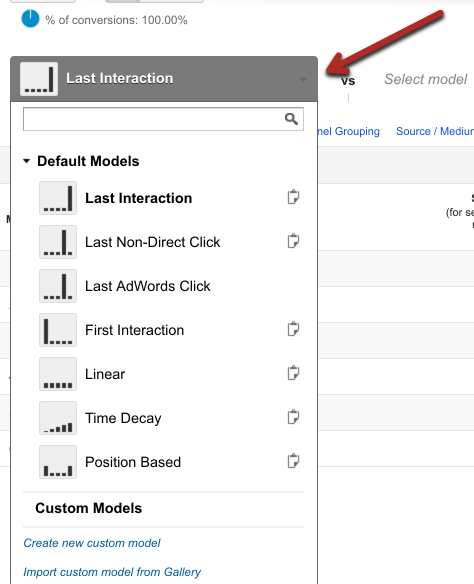If you think you don’t receive the credit for all of your AdWords conversions, you are probably right. In any account, there can be hundreds of conversions that are incorrectly attributed to other sources, when in fact PPC played a significant role.
The reason your paid search campaigns do not receive the full credit they deserve is because the default attribution model in Google Analytics is based on how the web worked in the 1990’s.
Paid search funnels in the 90’s typically looked like this:
- A user performed a search on a desktop
- Clicked an ad once
- Went to your website and converted
In this simple 1990’s paid search sales funnel, it made sense to attribute all of the credit to that paid click. That click was the last one, did all of the hard work and, like Shawn Kemp on the 1995 Supersonics, completely carried the team. Assigning this type of credit for conversions is (not surprisingly) called last-click attribution modeling.
However, the world has changed dramatically since that sweet, sweet decade.
Currently, users interact with your business on many occasions, in many channels and many devices before they convert. You are dealing with a more sophisticated consumer.
An example of an online sales funnel today may be:
- A user searches on their mobile device and clicks your paid call extension. This puts them in contact with your sales team.
- Your sales team determines they are a sales qualified lead so they put the user into your autoresponder email sequence.
- The user receives the autoresponder email on the desktop, enjoys the educational content and decides to like your company on Facebook.
- Now the user is exposed to your Facebook social media campaign which provides quality educational content.
- The user’s interest is truly piqued, so they go to other blogs and look at the reviews on their tablet.
- Satisfied with the reviews they search your company name on Google, the user goes to your site and then converts.
In this scenario a user has six different touchpoints across three networks on three separate devices. Each touchpoint played a vital role in moving the users towards the conversion, but with last click attribution modeling, the only click that gets credit for the conversion is the one from Google organic search.
For the person running paid search this way of attributing credit is unfair.
Your ad was involved, in fact, it was vital since it kicked off the whole sales funnel; however you do not get any credit at all based on the last click attribution modeling.
Solution: Use a Different Attribution Model
The business world has changed since the 1990’s, and your attribution model should change as well.
The default in AdWords and Analytics since the beginning of time has always been and still is the last click attribution model for paid search.
In this model, all of the credit is given to the last click before the conversion. It is binary. Either the click completely gets all the credit, or it gets none.
As you saw from the example, this model worked well in the beginning of paid search, but is no longer relevant to today’s marketer. Tracking and optimizing your marketing campaigns based on a model that no longer accurately reflects a user’s customer journey is a costly mistake.
To solve this issue, use a different attribution model that accurately reflects current business conditions.
You want to attribute some form of credit to the touchpoints that move the customer along the sales funnel towards a conversion.
Here is how to do just that.
How to Utilize Different Attribution Models
Setting up different attribution models in Google Analytics is surprisingly simple. Google provides you with different default modeling options to try out, and all you have to do is click a button!
To try out the different attribution models:
A. Log into your Google Analytics account.
B. In the top left-hand corner type in Model Comparison Tool and click on the highlighted link:

By default, Google sets your attribution to the last click attribution model, which as we discussed is not really the ideal model for understanding your paid search campaigns in this day and age. Review this model and the data that Google Analytics provides a baseline to compare the other attribution models:

C. To switch attribution models simply click on the arrow next to the last click attribution model, select which model you want and review the data to see how the data compares to last click attribution modeling:

When you change attribution models, Google Analytics automatically updates the data so you can see how it affects your account.
Here is some information about each attribution model that you can select so you have some information about why the data changed:
1. Last Click/Last Interaction
This model is best left in the 90’s. This attribution model gives 100% of the credit to the last click in the funnel and doesn’t take into account the other channels which assist in the conversion. If you utilize this model to make decisions about ad spend, it crushes your investment in top of the funnel channels like display and Facebook.
2. Last Non-Direct Click
I had to refer to Google on this because no one in the industry that I know uses this model. “In the Last Non-Direct Click attribution model, all direct traffic is ignored, and 100% of the credit for the sale goes to the last channel that the customer clicked through from before converting ” Honestly, I feel like Google just put this in because they could. If you have a good use case for this, please leave it in the comments.
3. Last AdWords Click
As someone who runs a paid search agency, this is certainly something I would love to implement, but I know it is not correct or good for real business decision. This model attributes 100% of the credit to the last AdWords click. This form of attribution model ignores many of the other channels which help and assist the conversion and doesn’t accurately reflect what lead to the conversion.
4. First Interaction/First Click
The first click is certainly important—in many cases it is the first interaction a user will have with your brand. However, with this attribution model you give 100% of the credit to the first click, which is often something like a display ad. The other clicks and channel that influence the conversion get ignored. In general, I find any 100% attribution models are not relevant to the current business climate.
5. Linear
This is the first model that splits out the attribution of the conversion amongst different clicks. In this model, all clicks are equal and the credit is divided equally along the user journey. However, that is like giving the credit for the success of the Simpsons to Lisa – yes, she played a part, but we all know she is not as important as Homer or Duffman. This model gives too much credit to the middle clicks of the funnel. While this model it is better than any 100% attribution model, there are other models which you should take a look at.
6. Time Decay
The idea with this attribution model is that the closer a user gets to the conversion the more important, their clicks are, so the conversion is attributed more to these later clicks. This actually makes sense for some business verticals, because as the clicks get closer to the conversion, they often are more valuable. Think about it from the perspective of a user going through a sales funnel – there are many top of the funnel clicks (which are less valuable), but as the users go through the funnel and learns more each click becomes more valuable because the purchase intent increases.
7. Position Based
This attribution model is my favorite—because it seems to make the most sense to the most businesses. In this model, the first and last click receive the lion’s share of the credit, and the middle channels get some credit. In my experience, the first and last click are often the most important. The first click is most often where the user enters into your sales funnel and the last click is where you get them to convert. However, this attribution model recognizes that although these first and last clicks are the most important, the middle clicks assist in the conversion as well.
When you stick with the default attribution model that Google provides you, you put your business at a disadvantage and don’t get the credit you deserve for your paid search campaigns. By learning about and trying out other attribution models you make your paid search campaign more reflective of how users move through the sales funnel in can make accurate decisions that increase your return on ad spend
How have you utilized attribution modeling to improve your paid search process?
Image Credits
Featured Image: Image by Adam Lundquist
All screenshots by Adam Lundquist. Taken May 2016.




